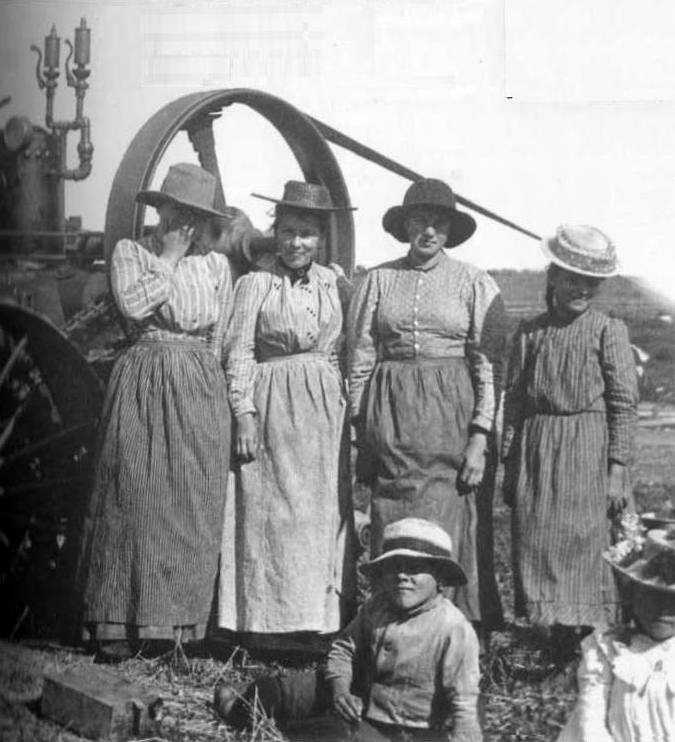
Agricultural Economics: Mechanization

Figure 1.--This female threshing crew was helping with a steam tractor on a Minnesota farm during the late-19th century. Machinery like this was aarity in Europe, but quickly adopted by American farmers. This leads to the question of why such innovation was so prevalnt in the English speaking world.
|
|
The Industrial Revolution began in England with the mechanizatio of cotton textile production (18th century) While initially focused on textiles, industrialization soon spred into other areas. And by the mid-19th centuries, mechanization resulted in major improvements in agriculture. Steam power and the development of stean boats and railroads. As with the Industrial Revolution itself, the first steam boats and railroads appeared first in England and now its American transplant. Often historians recount the major innovations and gloss over the fact that so many apoeared first in the Anglo-American counties. Improved transportation meant that it was possible to transport farm harvests to distabt markets to an extent never before possible. In additioin, a variety of machines were developed to mechanize agriculture. Again the early innovation came in Briain and now its trans Atlantic transport--America. A particularly important development was the treashing machines invented by Patrick Bell in Scotland and Cyrus McCormick in America. The introduction of these machines in Europe caused rebellions by workers fearful of being replaced. This was rarely the reaction in America. There were many other improvements, including the traction engine, steel plows (allowing farmersc to plpw deeper and break the tough sod of the Great Plains), seed drill, other harvesting machines, reapers, pivot irrigation, amd much more. The mechanization of farm labor meant that more food could be produced in greater quantities with a smaller work force, freeing up labor for the new industrial work force. It also speed of harvesting, an impoprtant factor for time critical crops. There was also a major impact on children. Mechanization reduced, but did not end, the need for child labor on the farm. This meant that more farm children could pursue their education.
CIH

Navigate the Children in History Website:
[Return to the Main Agriculture page]
[Return to the Main Economics page]
[About Us]
[Introduction]
[Biographies]
[Chronology]
[Climatology]
[Clothing]
[Disease and Health]
[Economics]
[Freedom]
[Geography]
[History]
[Human Nature]
[Law]
[Nationalism]
[Presidents]
[Religion]
[Royalty]
[Science]
[Social Class]
[Bibliographies]
[Contributions]
[FAQs]
[Glossaries]
[Images]
[Links]
[Registration]
[Tools]
[Children in History Home]
Created: 4:55 PM 8/1/2009
Last updated: 4:55 PM 8/1/2009



